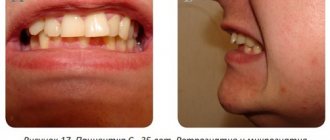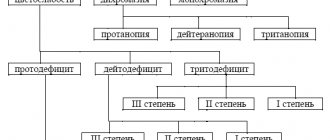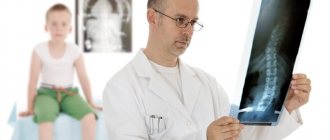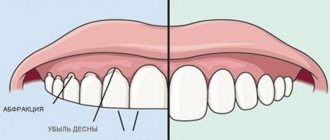Mental ill-being, an endogenous disease of the schizophrenia spectrum, a severe chronic illness leading to a disorder of mental activity - schizophrenia has been known to mankind throughout the history of existence. Despite this, diagnosis remains challenging. Not every psychotherapist is able to recognize the illness. The disease is characterized by significant clinical polymorphism. Schizophrenia changes a person’s behavior - that’s a fact. Worldwide, 1% of people are diagnosed, regardless of gender, race or continent. The rate may be higher due to true morbidity with mild or erased forms, which are not taken into account in official statistics.
Manifestation of symptoms
Schizophrenia symptoms and signs have three types: positive, negative and cognitive. They appear equally in both women and men. Some symptoms may be difficult to recognize as signs of mental illness. They look like laziness, depression, psychosis. If you look in more detail, the state of psychosis is indeed typical for people with this disease. Schizophrenia in women or men manifests itself at different ages. Schizophrenia in men from 15 to 35 years, and in women from 27 to 37 years.
Is it possible to be completely cured?
Actually, the answer is given at the very beginning. This disease is chronic, and therefore it will not be possible to get rid of it forever. But we are talking about an official diagnosis, which is recorded in the relevant documents. The patient’s immediate life in the future, that is, after the diagnosis of schizophrenia, depends on the specific type of psychopathology and preventive measures.
It is also worth understanding that negative symptoms may appear during remission. However, some of its signs are difficult to distinguish from the character traits of a particular individual. He may be withdrawn, depressed and unkempt from childhood, which will largely be explained by improper upbringing rather than schizophrenia. In such situations, it seems that it is curable, and the person is completely freed from this terrible illness. But it is possible that after accentuation of certain personal qualities, an exacerbation will occur again, which will lead to new hospitalization.
Schizophrenia is often detected in people of the schizoid type who are prone to loneliness.
It is necessary to decide what is meant by recovery. This is usually the name for such cases when a person, after recovery, becomes the same as he was before the onset of the disease. This does not happen with schizophrenia. It affects thinking and causes emotional disintegration of the personality. The more complex the attack, the stronger the consequences, which are called the schizophrenic effect. But in some cases it is practically unnoticeable, so the patient is no different from mentally healthy people.
Description of positive symptoms
Abnormal judgments and obsessions are noted at this stage. Schizophrenia causes a disorder of this kind against the will of the sick person. He can philosophize too much and conduct meaningless discussions on topics of an immense and global nature. The topic of conversation is often not only devoid of meaning, but also disordered in the style of narration, and there is a constant jumping from topic to topic. Positive signs of schizophrenia in women and men are accompanied by delusional states, motor and thinking disorders, and hallucinations.
Diagnostic criteria
The requirement for a diagnosis of paranoid schizophrenia is the presence of at least 1 clear manifestation or 2 subtle manifestations from the following group:
- statements about putting in or taking away thoughts;
- delusional beliefs that relate to motor activity, sensations, or actions;
- hallucinations of an audio nature - usually a voice commenting on the patient’s behavior or discussing his actions;
- persistent overvalued delusional ideas - beliefs in superpowers, communication with alien beings, etc.
To make a diagnosis, the following list of symptoms is also used, of which at least 2 manifestations must be present:
- overvalued beliefs that arise every day for a week or month, hallucinatory phenomena of any type;
- disruption of speech and thought processes;
- catatonic syndrome, overexcitation or freezing, stupor;
- symptoms of the negative subgroup - apathy, poor speech, inadequate emotional reactions, problems in social adaptation (signs should not be caused by depression or treatment with antipsychotics);
- behavioral disorders, loss of interests, non-targeted actions, self-absorption like autism.
In many types of schizophrenia, symptoms persist for at least 30 days. To be diagnosed with f25 episodic schizoaffective disorder, a patient must have at least one of the following symptoms for 14 days:
- audio hallucinations;
- delusions of control or influence;
- beliefs about telepathy - a person indicates the reception or transmission of a thought process;
- speech is broken, there are neologisms;
- there are delusional ideas that are not characteristic of any subculture of the patient;
- catatonic type symptoms.
During the diagnostic process, symptoms of a mood disorder must be present. The diagnosis is established if a person does not have organic disorders in the functioning of the brain.
Clinical manifestations
Additional symptoms are divided into positive and negative. Positive psychopathological syndromes:
- Asthenic - weakness, increased fatigue, lethargy.
- Psychopathic-like - increased affective lability, increased sensitivity and excitability, hypomanic behavior, overvalued formations.
- Affective - daily sharp mood swings, depression or mania, oneiroid.
- Hallucinatory - hallucinations, voices in the head, pseudohallucinations.
- Delusional - sensual delirium, paranoia, Kandinsky-Clerambault syndrome.
- Catatonic is a pathology that includes decreased (state of stupor) or increased (excitement) psychomotor activity.
Negative psychopathological syndromes:
- Autism is social isolation, inability to experience empathy, lack of spiritual connection with people and lack of interest in social life.
- A reduction in energy potential or a drop in mental activity - lack of productivity, difficulties in using existing knowledge, problems with the mobility of mental processes.
- Emotional changes - impoverishment of emotional reactions, lack of clear differentiation of emotions.
- The phenomena of drift are increasing passivity, the impossibility of building a “life line.” Patients give an analogy of their life to a “boat” that is sailing in an unknown direction.
- Thinking disorders/speech features - thinking is not purposeful, there is no sequence of thoughts and speech, there is no logic. Thinking is fragmented. Sometimes there is an “influx of ideas”, the content of which is difficult for the patient to articulate.
Dementia of the schizophrenic type is a separate negative syndrome. It occurs at the final stage of schizophrenia. To identify it, tests are used to assess cognitive abilities.
With dementia, there is a significant drop in intelligence. The “core of personality” is destroyed. There is a gross violation of the higher intellectual functions involved in the formation of judgments and conclusions. The patient is not able to adequately comprehend what is happening. He does not know how to apply concepts correctly. His thinking cannot analyze, synthesize, generalize information. Stereotyped statements are noticeable in speech. The stock of knowledge and skills suffers.
It is worth addressing the issue of the appearance of a person with schizophrenia. Patients often neglect hygiene and personal care. This is noticeable in sloppy, wrinkled clothes. The facial expression and gaze are sad, wary or “radiant.” Facial expressions are poor or inappropriate to the situation. In schizotypal disorder, patients' appearance is described as “eccentric,” ostentatious, or strange. Facial expressions are meager and restrained.
Description of negative symptoms
This group includes signs of schizophrenia with deeper emotional disorders. A person loses the ability to enjoy life. He falls into a depressed state or simply tries to protect himself from society. A neutral or bad mood is observed, but in rare cases the opposite manifestation occurs with an increase in mood. People with emotional disorders are not interested in the feelings of others. And they feel much more comfortable spending time alone. Schizophrenia manifests symptoms and signs of a negative type in the aspect of decreased sexual desire, ignoring hygiene rules, as well as alcohol consumption.
Pathologies of schizophrenia
Main psychopathic symptoms:
A feeling of “mirroring” thoughts (mental echo), detection of other people’s thoughts or loss of one’s own, replacement of thought processes, belief in the possibility of transmitting thoughts at a distance, delusions of various pathogenesis, asthenia, auditory, visual or verbal hallucinosis, affective suspicion, aggression and negativism. In some cases, a symptom of staging is very characteristic of the patient, for example, when a person says that some kind of performance is being played around him, all around people are hired actors, as if some action is taking place on stage, especially for him. A person experiences very vivid emotions: fear, anger, or, conversely, sexual disinhibition may be observed. Various bodily sensations may occur, such as a feeling of heat throughout the body or heat in the head.
Description of cognitive symptoms
Cognitive signs are characterized by impairments in concentration and certain types of memory. A person cannot adequately plan, organize his own life, or make decisions. Schizophrenia exhibits symptoms and signs in the same way in women and men, but they are not always recognized as a medical history. It is possible to understand that these are disorders only with the help of neuropsychological tests. Schizophrenia can disguise symptoms as depression and psychosis. Tests allow you to find the truth.
Are you experiencing symptoms of schizophrenia?
Only a doctor can accurately diagnose the disease. Don't delay your consultation - call
What are the reasons for development
Schizophrenia does not occur due to one factor. We can say unequivocally that the disease is transmitted by heredity. If one of your close relatives has had such a diagnosis, it will most likely pass on to your children. And for this, the gender of the carriers does not matter. Having second-degree relatives (aunts, uncles, cousins, and grandparents) also increases the risk of receiving a diagnosis. In medical practice, identical twins are also monitored, where one of them has mental disorders. The risk for the second is 65%. In addition to the fact that schizophrenia is inherited by close relatives, it is necessary to take into account the influence of other factors. They can provoke a trigger in the body for the development of mental pathology:
- viral infections;
- stressful situations;
- social factors;
- antenatal infections;
- lack of vitamins.
Risk factors and complications
Signs of schizophrenia in men and women at different stages may not appear or periodically disappear. This is especially possible if treatment is followed. There are patients who lead normal professional and social lives, although this diagnosis is characterized by a desire to isolate themselves from society. Schizophrenia develops gradually in women and men over several years. Risk factors include the following conditions:
- suicide attempts (5-6% of patients commit suicide);
- alcohol abuse;
- outbursts of aggression;
- addiction.
Main types of disease
In the medical classification, the main types of schizophrenia include 9 positions. Some of them have subtypes. Experts identify several of them, which occur most often. Paranoid schizophrenia manifests itself in increased suspicion of others. A person is haunted by the feeling that he is constantly being watched, he has delusions and hallucinations. In the catatonic form of the disease there are movement disorders. And this can be either complete immobilization or chaotic disorderly excitement. Simple schizophrenia does not have a history of acute psychosis, but negative symptoms increase over time. The hebephrenic form manifests itself in the form of dementia and foolishness.
Schizophrenic defect
The most severe complication of schizophrenia, apart from death, including due to suicide, is the complete collapse of personality. A person ceases to perceive the surrounding reality and remains in the world of his fantasies. He becomes emotionally cold, he is not interested in his loved ones and those hobbies that previously brought pleasure.
The nature of complications depends on four factors:
- Type of pathology. Thus, paranoid (paranoid) and hebephrenic malignant schizophrenia develop quickly, leaving a more noticeable mark on personal qualities. Latent or, for example, hypochondriacal forms manifest themselves less intensely. The latter is cured almost completely.
- Age. The earlier the disease debuted, the more difficult it is to treat and the more devastating its consequences. If schizophrenia manifested itself in an adult, then the likelihood of long-term remission is much greater.
- Timeliness of prescribed therapy. Some patients, realizing that something wrong is happening to them, do not contact doctors until they are hospitalized. A person who comes to a psychologist or psychotherapist during the negative phase of the disease has a greater chance of successful treatment.
- Prevention. After an attack, therapy does not stop. A person should not abandon it if he wants to live like other people. He will have to take care of both his mental and physical health. You need to give up psychoactive substances, walk in the fresh air, take pills and visit a psychiatrist.
Some patients have only one attack. As a result, the disease does not prevent them from leading a normal life. For others, exacerbations occur more often, but with long remissions of 5-8 years. Severe cases are accompanied by frequent active phases, each of which is much more complex than the previous one.
Diagnostics
At different stages, schizophrenia manifests symptoms in a range of emotions from baby talk and delusions with hallucinations to suicide attempts. It is necessary to conduct a medical examination to determine the exact clinical picture. Anamnesis is collected based on detailed questions about the patient and his relatives. The doctor will conduct a test for schizophrenia to determine the diagnosis. We are talking about a neurotest that shows immune blood parameters. Based on them, a decision is made on the final diagnosis and its severity. If necessary, the patient may be prescribed an MRI of the brain. Correctly selected treatment for schizophrenia has good results. In 50% it is possible to achieve remission, and 25% of patients completely get rid of the diagnosis, provided that the forms of schizophrenia can be corrected.
Classification
Continuous schizophrenia often begins at an early age.
She is progressing quickly. Without treatment, it leads to disability within 4-5 years, there are no remissions. Patients show an extreme degree of apathy, their speech is monotonous. Hallucinations are predominantly of a fantastic nature. The pathology is characterized by apathetic-abulic symptoms, dementia, and delusional ideas. Malignant juvenile types of the disease are more common in boys. During the period of manifestation, bright lucid catatonia is noted. This is a state of stupor in which consciousness is almost not disturbed. The memory is preserved. Oneiric catatonia occurs with equal frequency - stupor with disturbance (clouding) of consciousness and memory loss.
The paranoid type during the period of exacerbation is characterized by the predominance of delusional ideas of persecution. Occurs more often in women in adulthood. In addition to delusions, there are illusions and hallucinations of a threatening nature. The mood is often optimistic, but during attacks anxiety and depression predominate.
The recurrent type of course (periodic) is characterized by pronounced somatic disorders. Tachycardia, dehydration, and hemorrhage are present. Patients are able to maintain their ability to work, but personality disorders are noticeable. During the development of the disease, long intervals without symptoms are observed. During attacks, symptoms differ in affective overtones (depression or mania). Possible oneiroid stupefaction, catatonia.
Paroxysmal-progressive schizophrenia includes:
- rough progression - clear periods of remission with a complete absence of symptoms;
- medium - during the period of remission, symptoms do not go away completely;
- small - remission intervals do not have clear boundaries.
Personality changes in paroxysmal schizophrenia occur only during exacerbations and attacks. An exacerbation is characterized by acute delirium, insomnia, and severe anxiety. The fear of going crazy prevails.
Schizotypal disorder is a sluggish course of schizophrenia. During exacerbations, inappropriate behavior, isolation, sluggish emotional reactions, and eccentricity predominate. Thinking and speech are unique. Psychopathological symptoms are weak.
Atypical prolonged pubertal seizures
Schizophrenia in the form of an atypical prolonged pubertal attack, often with a benign course. Symptoms: body dysmorphic disorder, asthenia, infantilism of behavior and thinking.
People aged 11 to 23 years are at risk. This type of disease includes crisis manifestations of adolescence, which are distorted and their clarity increases. The stages of pathology are similar to the stages of adolescence:
- Initial manifestations are typical for patients aged 11-15 years. Characteristic traits become sharper, and bipolar affective disorders arise. Characterized by opposition to the surrounding world, an excessive need for self-affirmation. There is a high level of conflict, ideas of an overvalued nature.
- The increase in psychotic symptoms occurs between the ages of 16 and 20 years. Seizures occur, accompanied by onirism - delirium with hallucinations and confused consciousness. Problems with the associative process and ideas of guilt are noticeable. In addition to hallucinations, there are insomnias. At this stage, the person needs hospitalization and immediate initiation of therapy.
- At 20-25 years of age, symptoms become dynamic, and “bright” periods of remission appear. Social and labor adaptation is being restored.
Schizophrenia in the form of an atypical prolonged pubertal attack is formed on the basis of constitutional genetic factors. Primary importance is given to the mechanisms of adolescent maturation. While analyzing the family background of the patients, scientists came to the following conclusion. The family history of persons with atypical schizophrenia includes sluggish and paroxysmal forms of schizophrenia in the parents.
There are 3 types of atypical pubertal seizures. The first type is heboid attacks. They are characterized by exaggeration and modification of the manifestations of the teenage crisis. Volitional and affective disorders predominate. They lead to disregard for generally accepted norms of behavior. Stages of heboid type:
- At the initial stage, patients are from 11 to 15 years old. They experience increased excitability, perverted emotional reactions and desires. The attitude towards the surrounding world is skeptical and cynical. There is a noticeable desire for originality in reasoning. There are no common interests with peers. Dysthymia, dissatisfaction with oneself, predominates. Patients spend their time wandering the streets or idle.
- At 15-17 years old, the second stage of the disease begins. Pubertal disorders are characterized by psychopathic-like symptoms. The patients are rude, inadequate, and there is no motivation for activity. Negativity towards social norms is clearly manifested. Patients are eccentric, hostile towards relatives and strangers. The attacks are accompanied by impulsiveness, unreasonable rage, and aggression. Intellect is relatively preserved, but academic performance is poor. There are affective disorders, delusions, and hallucinations are possible.
- At the third stage (at 17-20 years old), symptoms stabilize and slow down at the second level. The clinical picture is monotonous and does not change against the background of changes in external conditions. There is an independent improvement in the condition without medical intervention. It lasts from 2-3 days to 2-3 weeks. But then it gets worse again.
- At the fourth stage, behavioral disorders are smoothed out, unmotivated hostility towards parents subsides. The stage indicates stable remission.
Starting from stage 2-3, patients with heboid attacks often begin to use psychoactive substances. Such a person is not amenable to correction or drug treatment. When taking psychoactive substances, mental retardation progresses. Teenagers with this pathology mature very slowly. At stage 2-3 of the disease, the process of growing up practically stops.
The second type of atypical schizophrenia is dysmorphophobic and psychasthenic-like disorders. Patients are dominated by the idea of an illusory physical defect in appearance and body structure. General clinical picture:
- asthenia;
- previously unusual indecision, uncertainty;
- problems in socialization;
- constraint in communication;
- tendency to “soul-searching” and reflection;
- derealization, depersonalization.
A large number of phobias and unreasonable fears develop. On the affective side, the bipolar current predominates. A person hides illusory flaws in appearance with clothes and shoes. Fear - hearing condemnation addressed to you. Stages of development by age with symptoms:
- Initial stage - the patient is from 15 to 18 years old. There is anxiety about excess weight. The patient is concerned about the “irregular” shapes of various parts of the body, the presence of birthmarks, etc. Persistent ideas about one's own defects interfere with learning or work. The person becomes withdrawn. He does not visit public places, does not communicate. There is an affective reaction to what is happening, colored by symptoms of hysteria. The presence of verbal illusions and paranoid thoughts about non-existent “bullying” is noted. Expressed hypochondria, a tendency to self-digging, asthenia.
- The second stage (22-23 years) - beliefs about defectiveness are smoothed out, the affective component is less pronounced.
- The third stage (24-26 years) - symptoms include affective disorders and inadequate ways of responding. What remains is isolation, excessive suggestibility, and self-centeredness.
Youthful metaphysical intoxication is a condition characterized by pretentious mental activity. Symptoms: blurred thinking, slipping, reasoning. Patients are “out of touch” with reality, their reasoning is unproductive. Characterized by fantasizing and isolation similar to autism. Other manifestations: fears, depersonalization, emotional scarcity, depression.
Paranoid schizophrenia
Another type of disease is chronic delusional psychosis or paranoid schizophrenia. This is a disorder in which delusions become the leading symptom. Unlike other types of disorder, delusion is not dynamic and stable. Delusional ideas are systematized.
Ideas about persecution and jealousy dominate in thinking. Hypochondria is very noticeable. There are no gross violations of personality traits. The emotional-volitional sphere is characterized by impoverishment. A special place is occupied by delusional psychosis of the dysmorphophobic type. Such patients are falsely convinced of the presence of physical defects that disfigure their appearance.
Pathology often affects young and mature people. Dysmorphophobia is more common in the female sex. Existing methods of therapy are ineffective against persistent delusional beliefs. Medication and psychotherapeutic approaches accomplish the task of reducing affective disorders. Most patients are able to maintain their ability to work, study and work for a long period.
Researchers have described the dynamics of paranoid manifestations. It develops in accordance with 3 directions: “migration, protection, attack” (“pursued pursuers”). The patient tries to escape from recruitment or persecution. At this time, he changes his place of work or residence. But even in a new location he again notices an attacker who wants to harm him. The patient begins to fear health risks and considers precautionary measures. He buys weapons and does not leave the apartment. If there are false beliefs about poisoning, all food in the refrigerator is carefully checked. To protect themselves, patients often turn to the police.
Chronic paranoid psychosis, occurring with phenomena of overvalued delusions, is another type of paranoid schizophrenia. The pathology most often affects adolescents or young adults (up to 21 years of age). The development of psychosis is slow. Highly valuable ideas often manifest themselves in research activities that were previously unusual for humans. These can also be extremely valuable ideas in love and collecting.
The manifestation of the disease is associated with psychogenic trauma, which becomes key among the patient’s experiences. Psychosis is characterized by periods of exacerbation, attenuation and reverse development of delusional beliefs. The “attenuation” stage can last from 3 to 10 years - the affective intensity of delirium decreases. Then the symptoms reverse.
Residual states (residual effects of pathology) do not always occur in paranoid psychosis. Statistics indicate the following. In people suffering from psychosis for more than 20 years, only 22% of cases developed residual conditions.
Special forms
Febrile schizophrenia is a special type of pathology that includes symptoms of severe toxicosis. Symptoms: severe increase in body temperature, oneiric disturbance of consciousness, overexcitation. There is a cycle of exacerbations and remissions. During the period of remission, symptoms completely subside.
Mosaic is another special type of pathology. Symptoms: increased temper, paranoia, a tendency to complain about imaginary problems, inflated self-esteem to the point of delusions of grandeur, a tendency to manipulate, problems with social adaptation. The symptoms are not persistent and varied. The essence of pathology is that a person experiences a “mixing” of different psychotypes. Therefore, specific symptoms are difficult to describe. At one time a person is characterized by aggressiveness and rudeness, at another - curiosity and tolerance.
There is social schizophrenia, in which a person tends to ignore the discrepancy between personal conclusions and actions. The physiology of the brain is not affected. Symptoms are long-lasting and remissions are rare.
Brief description of other types of pathology:
- Regular schizophrenia is a dissociative disorder caused by stress. With pathology, a person’s personality acquires characteristics that are opposite to each other. There are practically no remissions.
- Circular is a pathology that is more common in middle-aged people. Symptoms include manic and depressive phases, combined with hallucinations and delusions. Emotionality is poor.
- Hypochondriacal - excessive concern about one's own health. Unusual, disturbing sensations arise in the body. Neurosis-like symptoms are present.
- Senestopathic - uncomfortable bodily sensations. They can be localized both externally and on internal organs. The sensations arise without external triggers, and no objective causes are found in somatic health problems.
- Autumn schizophrenia is a pathology that worsens in the fall. Symptoms of depression dominate. Remissions occur at other times of the year.
- Resistant - a stable form of the disorder. It cannot be corrected by psychopharmacology. Remission is possible after treatment with two antipsychotic drugs for 5-8 weeks. Exacerbations are frequent.
Treatment
The first signs of schizophrenia are the ideal time to start therapy. In most cases, this does not work out because the symptoms are ignored or mistaken for other pathological conditions. If the test for schizophrenia confirms the diagnosis, the doctor will prescribe appropriate treatment. If acute symptoms occur, drug correction is recommended. This mainly applies to the following conditions: depression, anxiety, sleep problems, severe apathy, thinking disorders. Schizophrenia in men and women, if the treatment plan is followed, has a positive prognosis. For this purpose, psychotherapy is also used and social rehabilitation is carried out. In the process of treatment, it is necessary to ensure that the signs of schizophrenia in the negative group decrease in severity. In the future, it is important to maintain the condition to avoid relapses.
Pathogenesis of schizophrenia
Pathogenesis, namely the process of initiation and development of the disease, is quite complex. As was clarified above, the main cause of the disease is due to a genetic factor, which also includes such circumstances as a complicated pregnancy, addictions of one or both parents, psychological or physical traumatic situations during fetal development and in the first months after childbirth. In the future, the development of the disease can be influenced by negative social factors (dysfunctional family, poor care, etc.).
In the case of increased neurotoxicosis (neuronal damage to the brain), degenerative changes in the brain may increase.
So, at the moment, classical psychiatry is studying both exogenous (external) and endogenous (internal) mechanisms that influence the occurrence and development of schizophrenic disorder. Of greatest interest are precisely those hypotheses and theories that consider the results of both clinical and experimental studies at the same time.
Myths and misconceptions
Behavior reveals signs of schizophrenia openly if you understand the specific manifestations of the disease. People with this diagnosis are considered non-violent and safe for society. This is not a myth, but we must take into account possible outbursts of rage and aggression, and unpredictable actions.
Personal failure and stupid behavior - this is also what others often say. Yes, certain stages of schizophrenia lead to this condition. A person can even behave like a child. There are forms of schizophrenia with not very pronounced symptoms. People in such cases are no more stupid than others in society. It is interesting that among people diagnosed with schizophrenia, there are many talented artists and musicians. A striking example is Vincent Van Gogh.
Stages of schizophrenia
In the formation and progression of the disease, 4 main periods are defined, characterized by certain symptoms.
Basic periods of the disease:
- premorbid period;
- prodromal period;
- period of the first psychopathic episode;
- remission.
Premorbid period
At this stage, changes in the patient's character and personality traits may be observed. A person becomes overly tense, strange, hyper-emotional, overly suspicious, and others.
Prodromal period
Characterized by the destruction of connections with the outside world: Withdrawal, coldness, asociality, inability to concentrate, absent-mindedness, loss of interest in social life and family. Often, physiological changes in the brain begin in this phase.
Period of the first psychopathic episode
This stage is characterized by all the positive symptoms of the disease: such as delusions, obsessive thoughts and ideas, hallucinations of various types (visual, auditory, tactile or verbal).
Remission
In remission, the patient experiences a disappearance or weakening of characteristic symptoms for varying periods of time, sometimes long. However, aggravation cannot be avoided. Sooner or later, the patient is faced with the return of old or the appearance of new symptoms.
Defect concept
The defect in schizophrenia refers to mental, biological, social and emotional changes. There is a decline in any needs, apathy and indifference to everything appear, even to those things that previously aroused interest and satisfaction. By and large, the defect is defined as the terminal stage of a schizophrenic disorder. And the main goal of therapy is to delay its appearance. The state of the defect becomes clearly noticeable at the patient’s bodily level. There is a mask-like, emotionless, cold face, and immobility of facial expressions. The person seems to be detached, and those around him do not touch or touch him in any way, no matter what happens. Changes in motor functions appear. Most often, such violations are characteristic of the catonic form, which will be discussed below.
Ways to prevent disease
Schizophrenia provokes a disorder of normal life not only in the person diagnosed, but also in his family and close people. The disease is inherited, so prevention is aimed at leveling this aspect. It is necessary to reduce the risk of stress, maintain hormonal balance, not drink alcohol, and not take drugs. All possible risk factors must be addressed for the diagnosis of schizophrenia to become a reality. It is recommended to do things that help stabilize the psyche: physical labor, drawing and other manual creativity. It is better to understand the risks and carry out prevention than to then undergo treatment for schizophrenia.
How to make an appointment with a psychiatrist at JSC “Medicine” (clinic of academician Roitberg)
Anyone who has been diagnosed with schizophrenia needs psychological help. This is a normal human need to strive to return to normal life. Our clinic treats the delicate problems of patients with understanding. At the appointment, a psychiatrist will help you understand the essence of schizophrenia, find a way out of the situation and support you on the path to recovery.
You can make an appointment with a doctor on the website using a special form or by calling +7 (495) 775-73-60. The clinic is located within walking distance from the Mayakovskaya metro station in the center of Moscow: 2nd Tverskoy-Yamskaya lane, 10.










